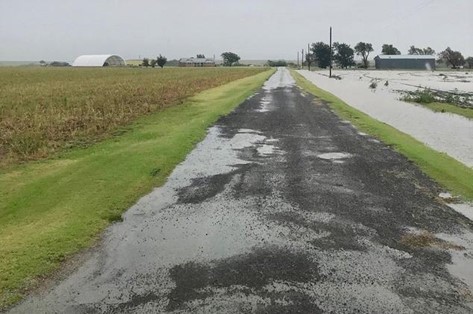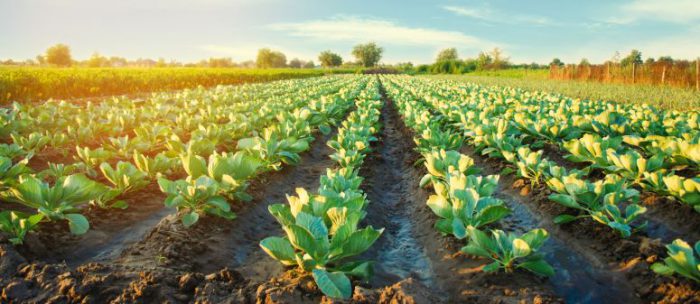Lucy Neiman, Zondits guest, 1/18/2023
Zondits and many other outlets have focused primarily on the transition to clean energy as the central path for addressing the challenges faced. Yet there is clear evidence that the transition away from fossil fuels alone cannot meet even the most conservative global climate goals that have been set. There are many significant reasons to conserve and protect our natural systems, and it is a growing realization that reducing carbon in the atmosphere is an important one. This series explores multiple ways that focused nature-based solutions can have positive impacts.
This second installment in the series looks at food and agricultural practices and approaches that help fight climate change.
Two of the most challenging issues facing the world are climate change and widespread hunger. Addressing these two issues is sometimes seen as serving competing goals: clear-cut forests to expand agricultural lands; increase herbicide and pesticide use to improve crop efficiency; pump irrigation long distances; etc. But it does not have to be that way. Zondits finds that many individuals and organizations are addressing the two issues with symbiotic approaches.
Projections show that the world will need to grow 50% more food by 2050 to meet the expanding population; yet in the last 40 years, erosion and pollution have reduced one-third of the globe’s arable land. Sustainable agriculture proponents agree that longstanding agricultural practices of single-crop farming and the heavy use of fertilizers and pesticides result in wind and water erosion and degraded soils less able to sustain crops. To restore this land agricultural practices must change fundamentally by increasing organic matter, root structures and soil micro-organisms to better support needed food production and carbon absorption. These changes will be a challenge for many farmers who follow conventional modern practices; however, recent global initiatives and incentives indicate that policies are changing and may provide the capital and technologies to advance the transformation to climate friendly practices.
The recent COP27 summit presented a turning point in the emphasis on food systems with one entire day of the Paris Agreement discussions focused on agriculture. “We can phase out fossil fuels, but we can’t phase out food, so we have to transform food systems,” said João Campari of the World Wildlife Fund’s (WWF) food practice. COP27 included panels and workshops with five pavilions focused entirely on food and agriculture. Several organizations led food and agriculture-related sessions and announced major initiatives:
- The Food and Agriculture for Sustainable Transformation (FAST) initiative focuses on finance to transform food and agriculture systems to build resilience and in particular help vulnerable communities.
- Initiative on Climate Action and Nutrition (I-CAN) promotes collaboration between UN agencies, NGOs, and the private sector to coordinate and accelerate actions and policies that tackle the connection between climate change and nutrition.
- The FAIRR Initiative focuses on animal production from an investment perspective and espouses that “intensive animal production poses material risks to the global financial system and hinders sustainable development.”
These transformative approaches build on the intersection between climate change and food systems and promote accelerating practices that will benefit the climate and address food insecurity across the globe. Efforts include a myriad of methods termed sustainable agriculture which protect the environment, maintain or restore soils, and expand natural resources. The goals of sustainable agriculture are “economic profitability for farmers; the promotion of environmental stewardship; and an increase in welfare for farmers, their communities, and their animals while producing enough to meet the needs of humans.” Sustainable agriculture includes organic agriculture where no synthetic fertilizers or pesticides are used, regenerative agriculture which attempts to reverse land and soil degradation, and permaculture; “the harmonious integration of landscape and people — providing their food, energy, shelter, and other material and non-material needs in a sustainable way.”
Sustainable agriculture promotes crop diversity, growing without pesticides or fertilizers, limited use of antibiotics for animals, and methods to restore soil nutrients. These methods typically support smaller farms and local economies further benefiting those adversely impacted by industrial agriculture.
Regenerative agriculture includes no-till practices to prevent carbon release and maintain soil micro-organisms, cover crops to prevent sun, rain and wind damage and restore nutrients, methods for preserving root webs that protect soil bacteria and fungi, companion growing (two crops in same soil), and animal grazing to rest and restore fields.
Agroforestry practices growing trees interspersed with crops and grazing livestock to provide root systems that increase soil fertility and water retention, habitats for diverse species, improved resiliency, shelter and overall shading for crops and livestock. The added benefit is additional carbon removal as trees are often viewed as the best carbon removal mechanisms on the planet.
Other practices include growing border plants which increase biodiversity and promote beneficial organisms (Integrated Pest Management) and sharing crop lands with solar and wind farms.
The jury is still out on whether no-till and other sustainable methods store more carbon, but multiple studies dating back to a 2007 University of Michigan study found that organic methods can produce the same amount of food per acre of land as industrial methods. Added benefits of sustainable agriculture include reduced adverse environmental impacts, water conservation, improved biodiversity and support for local communities and farms. The journal Nature reports that “agroforestry, and tree cover on agricultural land in general, has clear potential to contribute to climate change mitigation while providing an array of adaptation benefits.”

Rob Myers with the University of Missouri
The Natural Resources Defense Council (NRDC) recently interviewed farmers and ranchers practicing regenerative agriculture across the country. Interviewees, including recent converts and others with years of experience, described observing soil health and fertility improvements that increased crop yields and resulted in healthier crops. Soil held water better and was better able to withstand flooding and drought.
Many of the farmers interviewed spoke about improved farm profitability from increased yields and reduced costs for chemical fertilizers and pesticides. Local community members invested in food processing facilities and value-added products contributing to improved rural economic development. Some farmers formed local supportive networks and cooperatives to share practices and help aggregate sales, creating more cohesive communities. And finally, many spoke of the personal satisfaction and joy from farming, the financial security of depending on multiple crops rather than a single source, and the pleasure gained from growing food for their community. As many home gardeners know, the pleasure of growing crops, digging into the soil to find a multitude of earthworms and the satisfaction of serving fresh, natural home-grown food to others is a powerful force.
Additional reading on the topic:
- TheGuardian.com article: Earth has lost a third of arable land in past 40 years, scientists say
- SentientMedia.org article: What Is Sustainable Agriculture and Why Is It So Important?
- PermacultureNews.org article: What is Permaculture?
- Cambridge.org article: Renewable Agriculture and Food Systems
- SentientMedia.org article: Regenerative agriculture
- NRDC.org article: Regenerative Agriculture Part 4: The Benefits
- Nature.com article: Global Tree Cover and Biomass Carbon on Agricultural Land: The contribution of agroforestry to global and national carbon budgets
- ERM.com podcast: Episode One: Natural Climate Solutions and the importance of collaboration https://www.erm.com/podcast/sustainable-connections-episode-one-natural-climate-solutions-collaboration/
